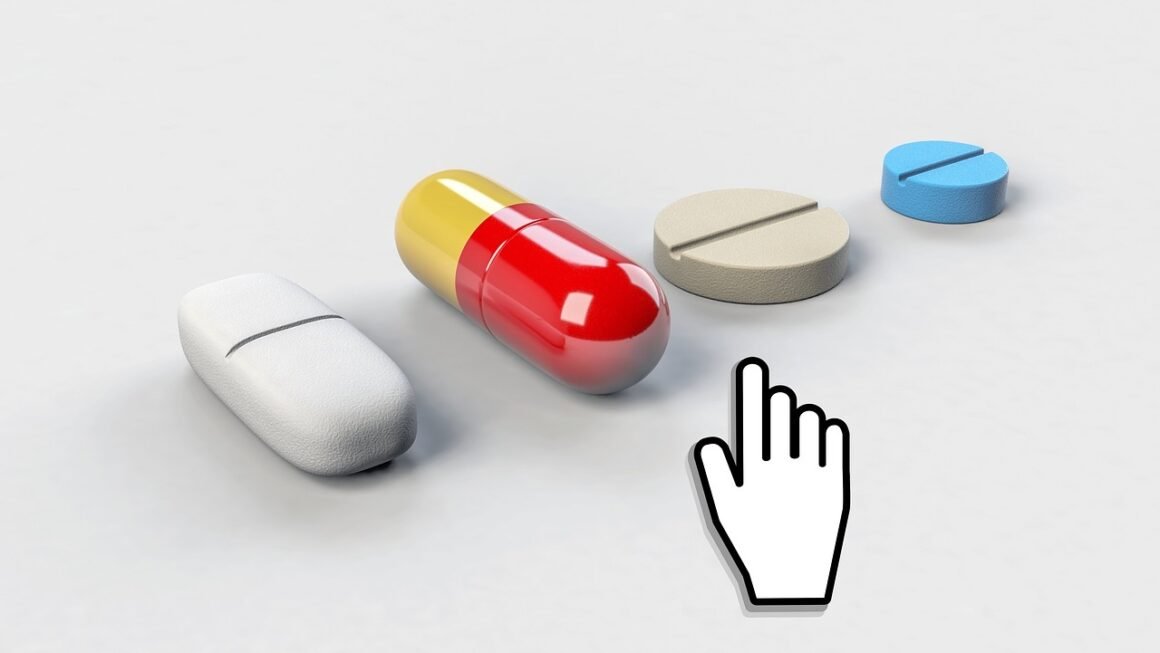Imagine your business as a fishing expedition. You can’t just cast your net anywhere and expect to haul in a boatload of eager customers. You need a strategy, a plan to guide potential customers from awareness to becoming loyal buyers. That’s where a sales funnel comes in, a meticulously designed process that nurtures leads and converts them into paying clients. Understanding and optimizing your sales funnel is critical for sustainable growth and maximizing your revenue.
Understanding the Sales Funnel
What is a Sales Funnel?
A sales funnel is a visual representation of the journey a customer takes from first learning about your business to finally making a purchase. It’s called a “funnel” because, typically, a large number of potential customers enter at the top, but only a fraction make it through to the bottom – becoming paying customers. Think of it as a step-by-step process that guides prospects through each stage of their buying decision.
The basic sales funnel consists of these key stages:
- Awareness: The prospect becomes aware of your brand or product/service.
- Interest: The prospect shows interest and starts researching your offerings.
- Decision: The prospect evaluates your solution against competitors.
- Action: The prospect makes a purchase and becomes a customer.
While this is the classic AIDA (Awareness, Interest, Desire, Action) model, many businesses adapt it to better reflect their specific customer journey. For example, post-purchase, stages like retention and advocacy might be added to encourage repeat business and referrals.
Why is a Sales Funnel Important?
Implementing and analyzing your sales funnel offers numerous benefits:
- Improved Customer Understanding: By mapping the customer journey, you gain insights into their needs, pain points, and motivations at each stage.
- Increased Conversion Rates: Identifying bottlenecks in the funnel allows you to optimize your marketing and sales efforts to improve the percentage of prospects who convert into customers.
- Predictable Revenue: A well-defined sales funnel provides a framework for forecasting sales and revenue based on the number of leads at each stage.
- Targeted Marketing: Allows you to tailor your messaging and content to the specific needs of prospects at each stage of the funnel.
- Data-Driven Decision Making: Provides data and analytics to inform marketing and sales strategies, leading to more effective resource allocation.
Without a sales funnel, your marketing efforts might feel scattershot and inefficient. You’re essentially hoping potential customers stumble across your product and decide to buy it immediately. A funnel provides structure and intentionality.
Mapping Your Customer Journey
Identifying Your Target Audience
Before you can build a successful sales funnel, you need to know who you’re trying to reach. Developing detailed buyer personas is crucial. These personas should include:
- Demographics: Age, gender, location, income, education, etc.
- Psychographics: Values, interests, lifestyle, attitudes, and opinions.
- Pain Points: What problems are they trying to solve? What are their frustrations?
- Goals and Aspirations: What are they hoping to achieve?
- Buying Behavior: How do they research products? What influences their decisions?
Example: Imagine you sell project management software. Your ideal customer might be a marketing manager at a small to medium-sized business who is struggling to keep track of multiple campaigns, budgets, and deadlines. They are likely frustrated with using spreadsheets and want a more efficient solution to improve team collaboration and project visibility. Understanding this allows you to tailor your messaging to address those specific pain points.
Visualizing the Stages
Once you understand your target audience, map out the specific stages of their journey. This might be different from the AIDA model, depending on your business.</ Consider these steps:
Create a visual representation of this journey, showing each stage and the touchpoints involved. This will help you identify areas where you can optimize the process.
Building and Optimizing Each Stage
Awareness: Attracting Potential Customers
The goal of the awareness stage is to make your target audience aware of your brand and the solutions you offer. Effective strategies include:
- Content Marketing: Create valuable blog posts, articles, videos, and infographics that address your audience’s pain points and provide solutions. Example: A blog post titled “5 Project Management Mistakes That Are Killing Your Productivity” can attract marketing managers looking for project management tips.
- Search Engine Optimization (SEO): Optimize your website and content to rank higher in search engine results for relevant keywords. Use tools like Google Keyword Planner and SEMrush to identify relevant keywords.
- Social Media Marketing: Share engaging content on social media platforms where your target audience is active. Use targeted advertising to reach specific demographics and interests.
- Paid Advertising: Run targeted ads on platforms like Google Ads and social media to reach a wider audience.
- Public Relations: Secure media coverage and mentions in relevant publications and websites.
Actionable Takeaway: Focus on creating high-quality, valuable content that resonates with your target audience and solves their problems. Track your website traffic, social media engagement, and ad performance to measure the effectiveness of your awareness campaigns.
Interest: Nurturing Leads and Building Relationships
Once prospects are aware of your brand, the goal is to nurture their interest and build relationships. Strategies include:
- Lead Magnets: Offer valuable free resources (e.g., ebooks, templates, checklists, webinars) in exchange for contact information. Example: Offering a free project management template to visitors who provide their email address.
- Email Marketing: Send targeted email campaigns that provide valuable content, share relevant information, and promote your products or services. Segment your email list based on interests and behaviors to personalize your messaging.
- Retargeting Ads: Show targeted ads to website visitors who have shown interest in your products or services.
- Community Building: Create a community forum or social media group where prospects can connect with each other and with your brand.
- Case Studies and Testimonials: Showcase success stories from satisfied customers to build trust and credibility.
Actionable Takeaway: Focus on providing value to your prospects and building relationships. Track your email open and click-through rates, lead magnet downloads, and engagement in your online communities to measure the effectiveness of your nurturing efforts.
Decision: Addressing Objections and Demonstrating Value
At this stage, prospects are actively evaluating their options and comparing your solution to competitors. Your goal is to address their objections and demonstrate the unique value you offer. Strategies include:
- Product Demos and Trials: Offer free demos or trials of your product or service to allow prospects to experience the value firsthand.
- Competitive Comparisons: Provide clear and concise comparisons of your solution versus competitors, highlighting your unique advantages.
- Pricing and Payment Options: Offer flexible pricing and payment options to make it easier for prospects to purchase.
- Customer Support: Provide excellent customer support to answer questions and address any concerns.
- Money-Back Guarantees: Offer a money-back guarantee to reduce risk and build confidence.
Example: If a prospect expresses concern about the complexity of your project management software, offer a personalized onboarding session to demonstrate its ease of use and answer any specific questions. Provide case studies showcasing how other similar businesses have successfully used the software.
Actionable Takeaway: Focus on addressing objections and demonstrating the value you offer. Gather feedback from prospects to identify common concerns and improve your sales process.
Action: Closing the Sale and Onboarding New Customers
This is the stage where prospects make a purchase and become customers. Your goal is to make the purchasing process as smooth and seamless as possible. Strategies include:
- Clear Call-to-Actions (CTAs): Use clear and concise CTAs that guide prospects to take action (e.g., “Buy Now,” “Sign Up Today,” “Get Started”).
- Simplified Checkout Process: Make the checkout process as easy and quick as possible. Minimize the number of steps required and offer multiple payment options.
- Personalized Onboarding: Provide personalized onboarding to help new customers get started with your product or service.
- Welcome Emails: Send a welcome email that provides helpful information and resources.
- Excellent Customer Service: Continue to provide excellent customer service after the sale to ensure customer satisfaction.
Example: After a customer signs up for your project management software, send a welcome email with links to onboarding videos, tutorials, and FAQs. Offer personalized support to help them set up their account and get started.
Actionable Takeaway: Focus on making the purchasing process as smooth and seamless as possible. Track your conversion rates and identify areas where you can improve the customer experience.
Measuring and Analyzing Your Sales Funnel
Key Metrics to Track
To effectively optimize your sales funnel, you need to track key metrics at each stage:
- Website Traffic: The number of visitors to your website.
- Lead Generation: The number of leads generated from your marketing efforts.
- Conversion Rates: The percentage of prospects who move from one stage of the funnel to the next.
- Customer Acquisition Cost (CAC): The cost of acquiring a new customer.
- Customer Lifetime Value (CLTV): The total revenue you expect to generate from a customer over their relationship with your business.
- Churn Rate: The percentage of customers who stop doing business with you.
Tools like Google Analytics, CRM systems (e.g., Salesforce, HubSpot), and marketing automation platforms can help you track these metrics.
Identifying Bottlenecks
Analyzing your sales funnel data will help you identify bottlenecks – areas where prospects are dropping off. For example, if you have a high number of website visitors but a low number of leads, you might need to improve your lead magnets or website design. If you have a high number of leads but a low conversion rate, you might need to improve your sales process or address common objections.
A/B Testing
A/B testing is a powerful technique for optimizing your sales funnel. It involves testing different versions of your website, landing pages, email campaigns, and other marketing materials to see which performs better. For example, you could test different headlines, images, or call-to-actions to see which generates the most leads or sales.
Conclusion
Understanding and optimizing your sales funnel is essential for driving growth and maximizing revenue. By mapping your customer journey, building effective marketing and sales strategies for each stage, and continuously measuring and analyzing your results, you can create a well-oiled machine that converts prospects into loyal customers. Remember to focus on providing value at every touchpoint, building relationships, and continuously improving the customer experience. By implementing these strategies, you’ll be well on your way to building a thriving and sustainable business.



